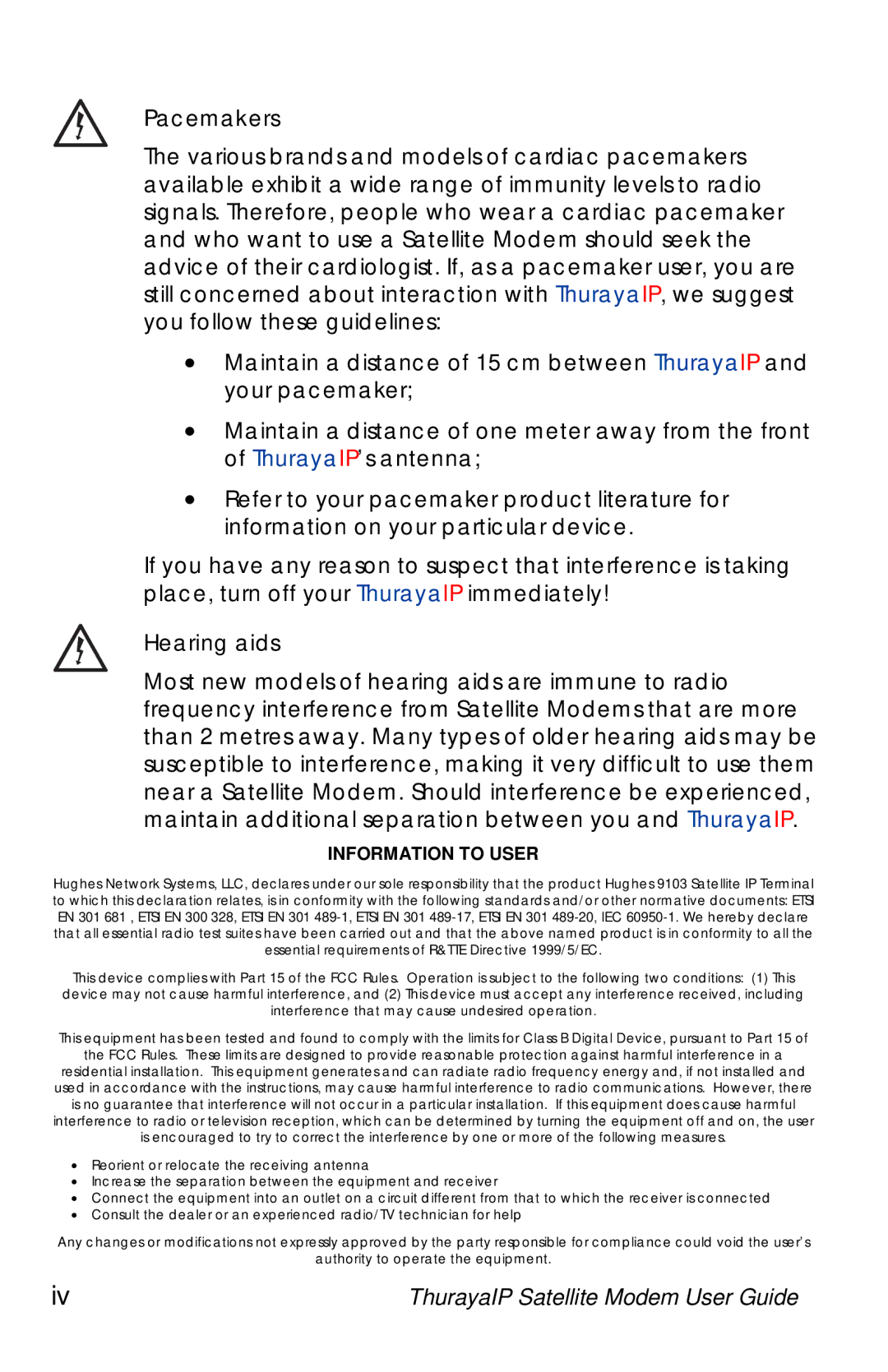Pacemakers
The various brands and models of cardiac pacemakers available exhibit a wide range of immunity levels to radio signals. Therefore, people who wear a cardiac pacemaker and who want to use a Satellite Modem should seek the advice of their cardiologist. If, as a pacemaker user, you are still concerned about interaction with ThurayaIP, we suggest you follow these guidelines:
•Maintain a distance of 15 cm between ThurayaIP and your pacemaker;
•Maintain a distance of one meter away from the front of ThurayaIP’s antenna;
•Refer to your pacemaker product literature for information on your particular device.
If you have any reason to suspect that interference is taking place, turn off your ThurayaIP immediately!
Hearing aids
Most new models of hearing aids are immune to radio frequency interference from Satellite Modems that are more than 2 metres away. Many types of older hearing aids may be susceptible to interference, making it very difficult to use them near a Satellite Modem. Should interference be experienced, maintain additional separation between you and ThurayaIP.
INFORMATION TO USER
Hughes Network Systems, LLC, declares under our sole responsibility that the product Hughes 9103 Satellite IP Terminal to which this declaration relates, is in conformity with the following standards and/or other normative documents: ETSI EN 301 681 , ETSI EN 300 328, ETSI EN 301
This device complies with Part 15 of the FCC Rules. Operation is subject to the following two conditions: (1) This device may not cause harmful interference, and (2) This device must accept any interference received, including interference that may cause undesired operation.
This equipment has been tested and found to comply with the limits for Class B Digital Device, pursuant to Part 15 of
the FCC Rules. These limits are designed to provide reasonable protection against harmful interference in a
residential installation. This equipment generates and can radiate radio frequency energy and, if not installed and used in accordance with the instructions, may cause harmful interference to radio communications. However, there is no guarantee that interference will not occur in a particular installation. If this equipment does cause harmful interference to radio or television reception, which can be determined by turning the equipment off and on, the user is encouraged to try to correct the interference by one or more of the following measures.
•Reorient or relocate the receiving antenna
•Increase the separation between the equipment and receiver
•Connect the equipment into an outlet on a circuit different from that to which the receiver is connected
•Consult the dealer or an experienced radio/TV technician for help
Any changes or modifications not expressly approved by the party responsible for compliance could void the user’s
authority to operate the equipment.
iv | ThurayaIP Satellite Modem User Guide |
